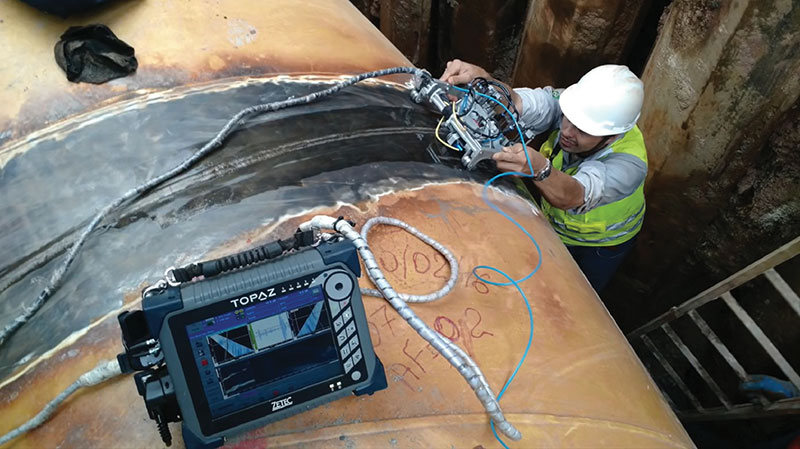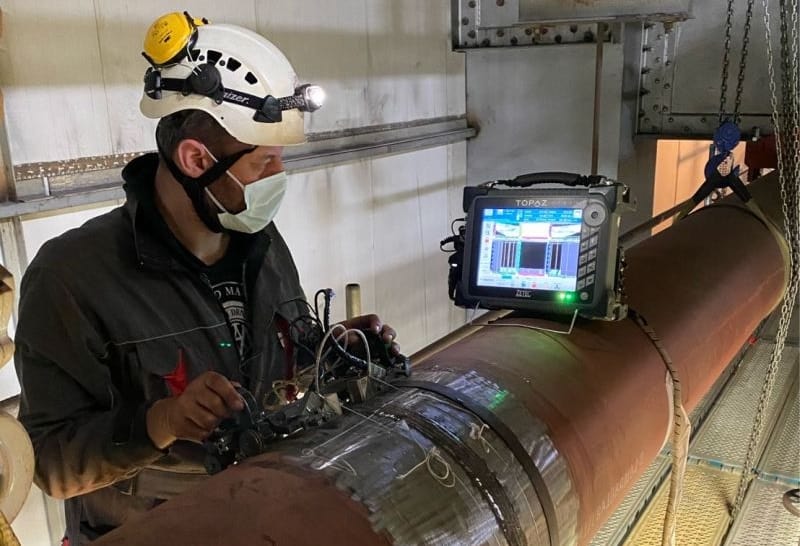Extensive Pipeline Welding Inspection Solutions for Commercial Projects
Extensive Pipeline Welding Inspection Solutions for Commercial Projects
Blog Article
Comprehensive Introduction of Pipeline Welding Assessment Treatments
Pipeline welding evaluation treatments play a critical duty in ensuring that welded connections meet rigid industry criteria and specs. From meticulous pre-welding examinations to extensive post-weld analyses, a well-defined assessment procedure is essential for preserving the structural sturdiness of pipes.
Pre-welding Examination Preparations
Before commencing the welding procedure, detailed pre-welding examination preparations are important to make sure the stability and top quality of the weld joint. These preparations entail a meticulous evaluation of the materials to be welded, the welding equipment, and the workplace. Firstly, the products have to be evaluated for any type of problems, impurities, or disparities that can jeopardize the weld. This includes monitoring for appropriate product grades, measurements, and surface area conditions. Pipeline Welding Inspection. Furthermore, the welding tools needs to be inspected to confirm that it remains in great working condition, calibrated correctly, and ideal for the certain welding process. Any type of problems with the devices should be dealt with without delay to protect against issues in the weld. Lastly, the job atmosphere have to be reviewed for tidiness, proper air flow, and safety measures to guarantee a helpful setup for the welding procedure. By carrying out extensive pre-welding examination prep work, possible issues can be determined and settled beforehand, bring about trustworthy and high-quality weld joints.
Welding Procedure Credentials
Detailed pre-welding assessment prep work lay the structure for the critical process of Welding Treatment Credentials, making sure the stability and quality of the weld joint. Welding Procedure Credentials (WPQ) is a vital action in the welding procedure that involves screening and licensing welding treatments to ensure they fulfill details requirements and requirements. The WPQ procedure typically consists of welding procedure requirements advancement, welding procedure qualification screening, and paperwork of the results.
Throughout welding procedure spec growth, necessary information such as the welding process, welding products, joint layout, and welding criteria are specified to develop a thorough procedure. Ultimately, welding procedure credentials testing is performed to validate the recommended treatment's integrity. This testing typically involves welding test promo codes that go through different mechanical and non-destructive tests to evaluate the weld's high quality and adherence to the specified requirements.
In-process Weld Examination
Throughout the welding process, in-process weld examination plays a crucial duty in making sure the quality and honesty of the weld joint - Pipeline Welding Inspection. This sort of examination entails checking the welding specifications, assessing the weld bead formation, and identifying any type of potential issues or gaps as they take place. By performing in-process weld assessments, welding operators can promptly resolve any type of concerns that might occur, thereby ensuring and protecting against further defects that the final weld satisfies the required requirements
Typical techniques utilized for in-process weld examination consist of aesthetic examination, liquid penetrant testing, magnetic fragment testing, ultrasonic testing, and radiographic testing. Visual inspection is usually the very first step at the same time, allowing examiners to aesthetically evaluate the weld for surface area abnormalities such as fractures, porosity, or incomplete combination. More sophisticated techniques like ultrasonic screening and radiographic screening supply thorough insights right into the inner structure of the weld, making sure that there are no covert defects that could jeopardize the weld joint's toughness and integrity. On the whole, in-process weld evaluation is essential for preserving the high quality and dependability of bonded pipelines.
Non-destructive Testing (NDT)
Non-destructive Testing (NDT) is a crucial technique used in pipeline welding evaluation to evaluate the honesty of weld joints without triggering damage to the bonded framework. By making use go right here of numerous NDT techniques, inspectors can assess the top quality of welds and recognize any kind of problems or stoppages that might compromise the structural strength of the pipeline. Usual NDT techniques made use of in pipe welding inspection include Radiographic Screening (RT), Ultrasonic Screening (UT), Magnetic Bit Examining (MPT), Fluid Penetrant Screening (LPT), and Visual Testing (VT)
RT entails the usage of X-rays or gamma rays to create pictures of the inner structure of the weld, allowing examiners to find issues such as porosity, splits, or insufficient combination. UT uses high-frequency acoustic waves to detect imperfections underneath the try this site surface area of the weld, offering thorough info about the dimension and area of issues. MPT and LPT are utilized to recognize surface-breaking issues by applying penetrant fluids or magnetic particles to the weld location. In addition, VT entails aesthetic inspection of welds to recognize any kind of visible blemishes.
Post-weld Examination and Documentation


Documents of post-weld assessment findings is crucial for preserving quality assurance documents and ensuring compliance with market standards and laws. In-depth reports need to consist of details about the evaluation approaches used, the area and nature of any issues located, and any rehabilitative actions taken - Pipeline Welding Inspection. Appropriate paperwork not just acts as a record of the weld's top quality but likewise aids in future maintenance and evaluation procedures
Verdict

To conclude, pipe welding evaluation procedures play a vital role in ensuring the top quality and stability of welds. From pre-welding evaluations to post-weld documentation, each action is crucial in preserving the security and efficiency of pipes. By following established treatments and conducting extensive inspections, potential defects can be determined and dealt with prior to they bring about expensive repair services or failings. In general, adherence to proper examination methods is key to the success of pipe welding projects.
From precise pre-welding evaluations to extensive post-weld evaluations, a distinct examination process is important for maintaining the structural sturdiness of pipelines. By performing in-process weld examinations, welding operators can immediately address any kind of problems that might arise, thereby protecting against additional issues and making sure that the final weld fulfills the called for specifications.
Usual approaches used for in-process weld evaluation include visual evaluation, fluid penetrant screening, magnetic bit testing, ultrasonic screening, and radiographic screening.Non-destructive Screening (NDT) is a critical approach used in pipe welding inspection to analyze the honesty of weld joints without causing damage to the bonded structure. Post-weld examination includes various methods to analyze the welds for defects, consisting of aesthetic examination, dye penetrant screening, magnetic particle screening, ultrasonic testing, and radiographic screening.
Report this page